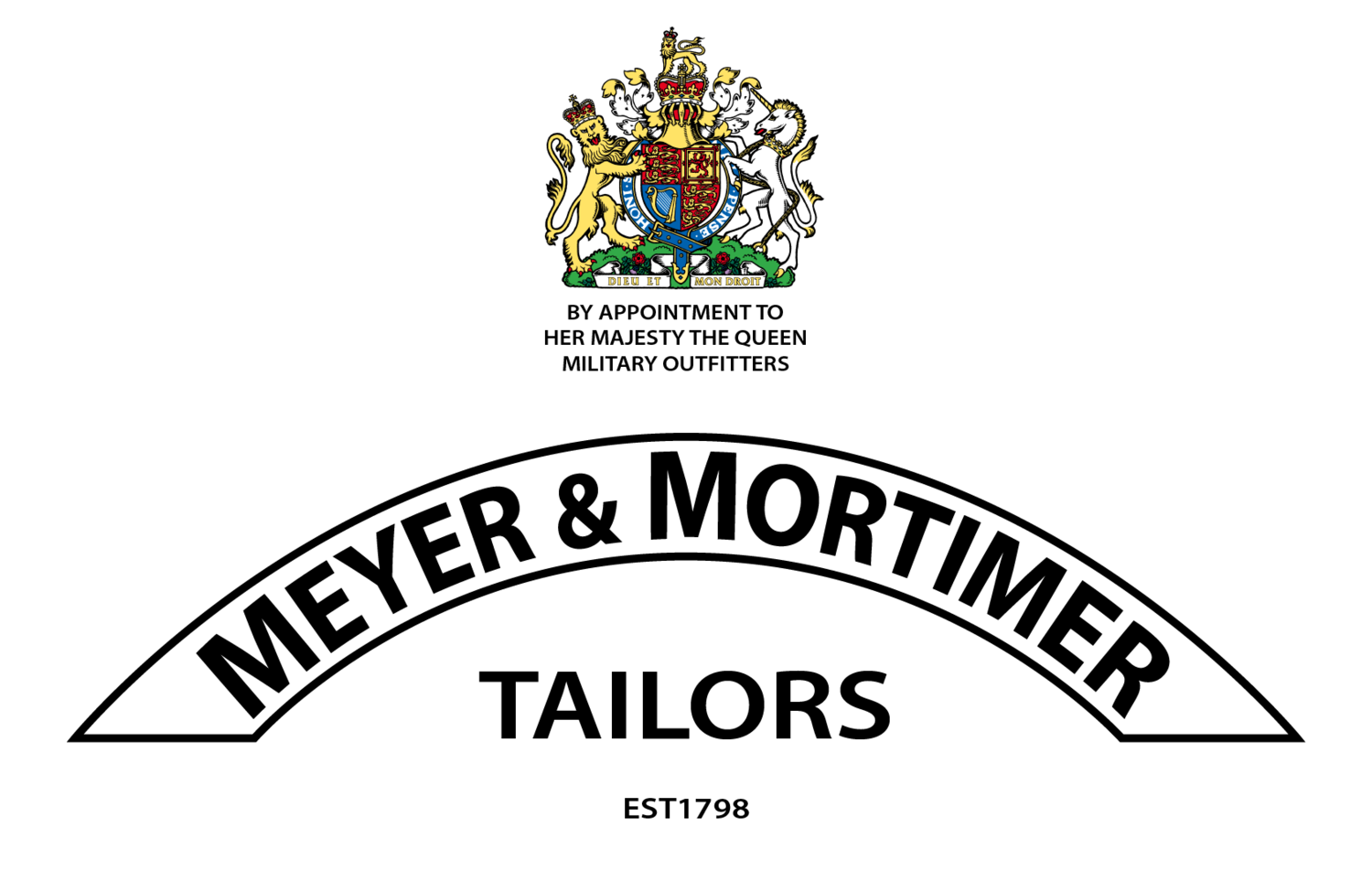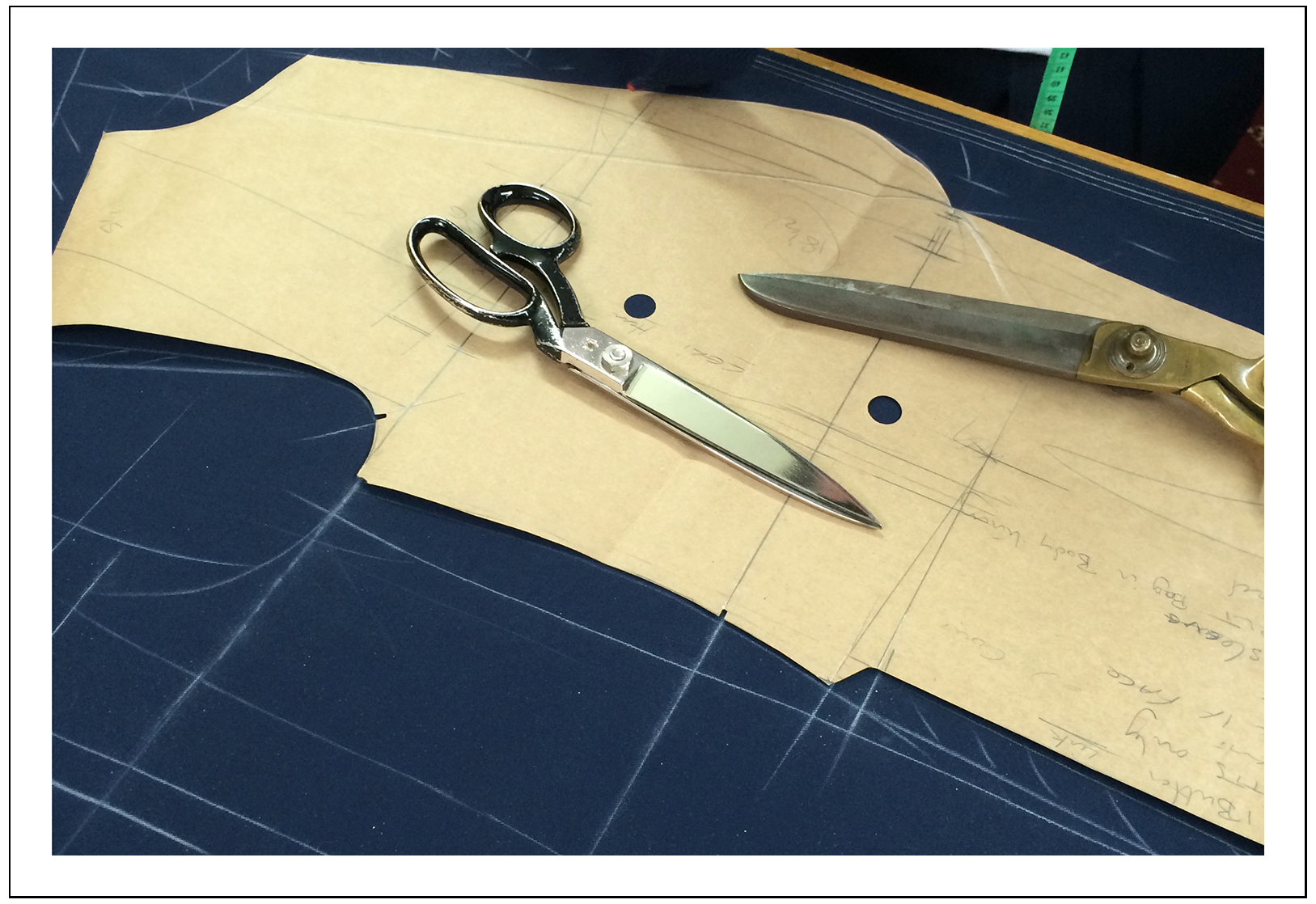In a new series of two-part conversations, we will be looking into the world of bespoke tailoring by asking what does your tailor do, what is the difference between a cutter and a tailor, and what does the word bespoke mean.
What does my tailor do?
To the outside world and those not overly familiar with Savile Row, a tailor might be considered to be the person who does everything. He or she will meet and greet you; take your measurements; discusses cloths and style, and then goes away to draft your pattern (more on this shortly). They'll then make the two-piece or three-piece suit themselves, carry out first and/or second fitting, and then deliver the finished product back to the customer.
Director & Cutter Brian Lewis
Although this model does exist, it is quite rare, particularly around Savile Row. Director, Paul Munday, suggests the whole process could take up to 60 hours to make a suit meaning the tailor is tied to that process and time frame. Without division of labour (a co-operation of individuals performing specific task and roles) this business model is only as good, and as quick, as the person making one suit at a time.
So how does it work?
Well tailoring is split largely into two main areas: there are tailors – who make the garments, then there’s your cutter. There are individuals who do everything but generally the roles are split.
Director & Cutter Paul Munday
What does a cutter actually do?
Before I explain that, and without wishing to over complicate matters, I want to make a further important distinction about who can take your measurements. At the larger tailor houses, cutters may not always be on the same floor as the shop so a sales person can take your measurements, discuss style and cloth and pass this onto a cutter. With Meyer & Mortimer being an independent small business our cutters: Brian Lewis, Paul Munday and Steve Phythian occupy both sales (aka front-of-house) and cutting so they’ll not only take your measurements but will also draft your pattern.
Cutter Steve Phythian
Ah, drafting patterns; you said you were going to explain more about that.
I did. Once a cutter has the measurements and information on style, cloths and ascertained any sloped or square shoulders, pronounced chests and curved backs… they will then translate these figures to paper. The process is called drafting a pattern which is a two dimensional illustration of the jacket and trousers. The result is the customer’s pattern, specific to them, so much so when they change (over time), so does the pattern.
Wow, so a two dimensional record of a three dimensional object, for want of a better word?
Yes, absolutely, and don’t forget that fourth dimension, time, and how that can affect a figure.
A customer’s pattern (front jacket)
So what happens next?
The pattern is then cut out and placed on the cloth of choice and outlined with chalk; a process called striking. Once struck, the cloth is cut out with trouser and jacket parts kept separate. Linings, pocketing, fastenings, pads, canvasses… are added to each (Trimmings) and then bundled together to go to the tailors, or makers.
And a tailor will now make those?
A fair assumption but returning to our division of labour point, a house will use a number of tailors to make garments with tailors largely dedicating their lives to one garment.
Downstairs in the workshop
So there are people who specifically make trousers, jackets and vests?
Absolutely, the detail and skill involved in being the best tailor you can be means that most tailors will spend their whole lives honing their skills on one garment. So your jacket can go to one tailor on one side of the workshop, and your trousers will be at the other end being made by someone else entirely and only coming back together again for the first fitting.
So the cutter then, to use a corporate title, is like a project manager?
Yes, a sartorial project manager who spends years understanding the human form who is able to transfer that to paper is an incredible skill in and of itself, with cutters – like tailors – dedicated their lives to it.
Paul Munday working on a jacket post second fitting
So if I understand this correctly: a Savile Row tailor will dedicate their lives to making one item of clothing, say trousers, but a cutter will measure and cut jackets, overcoats, trousers and vests?
Yes, that’s about – excuse the pun – the size of it.
What about shirts?
A good question. Shirtmaking has cutters and makers too but they tend to operate in their own microcosm with cutters, working in this field, dedicating their cutting work to shorts alone while still passing on the work to the makers.
Sean working opposite Brian
Like Sean O’Flynn, he’s a cutter then?
Yes, that’s right, Sean O'Flynn and his team downstairs make the shirts on site.
To be continued…
Can’t wait? Then please click here for the now published second instalment.
M&M








